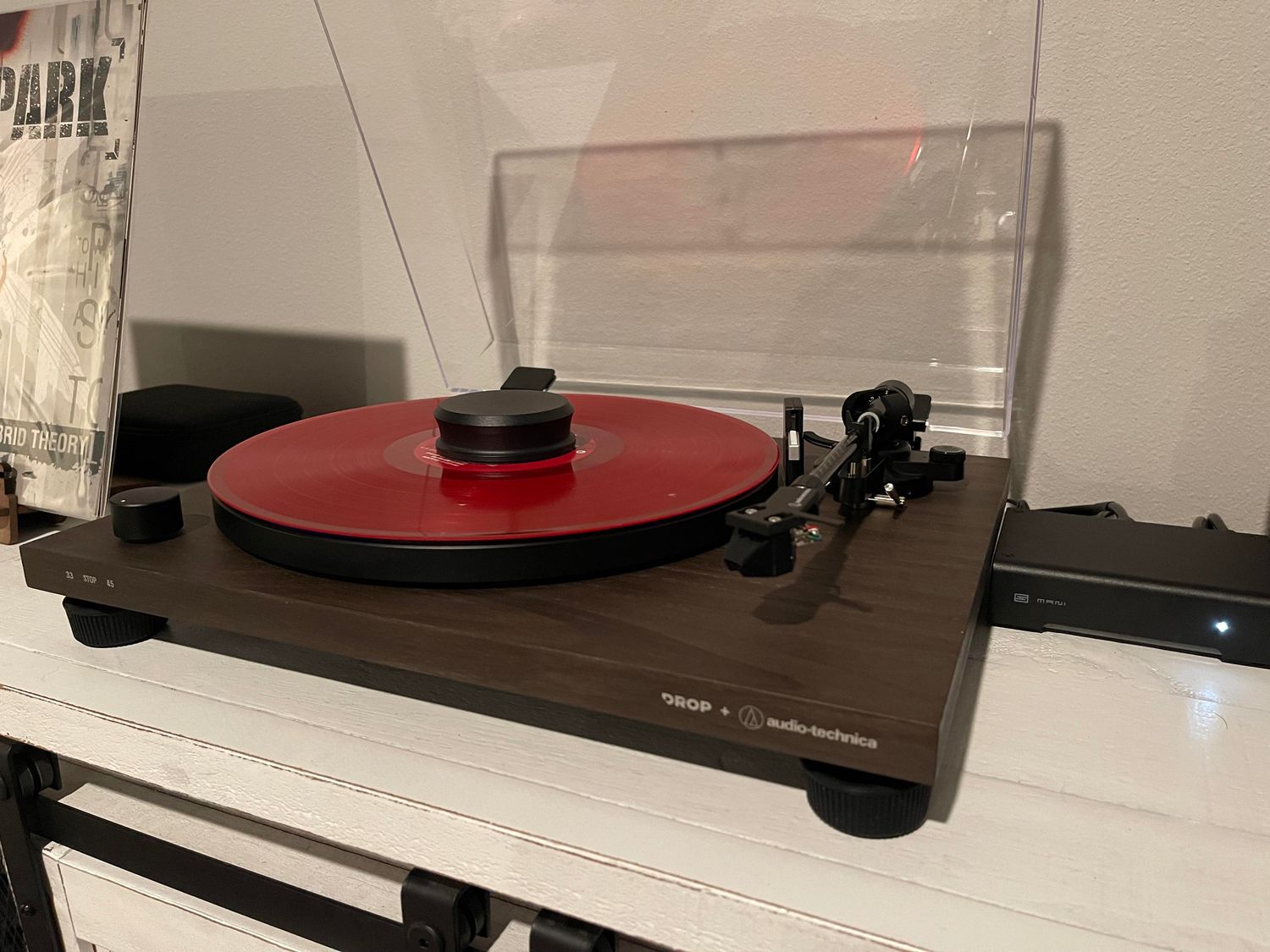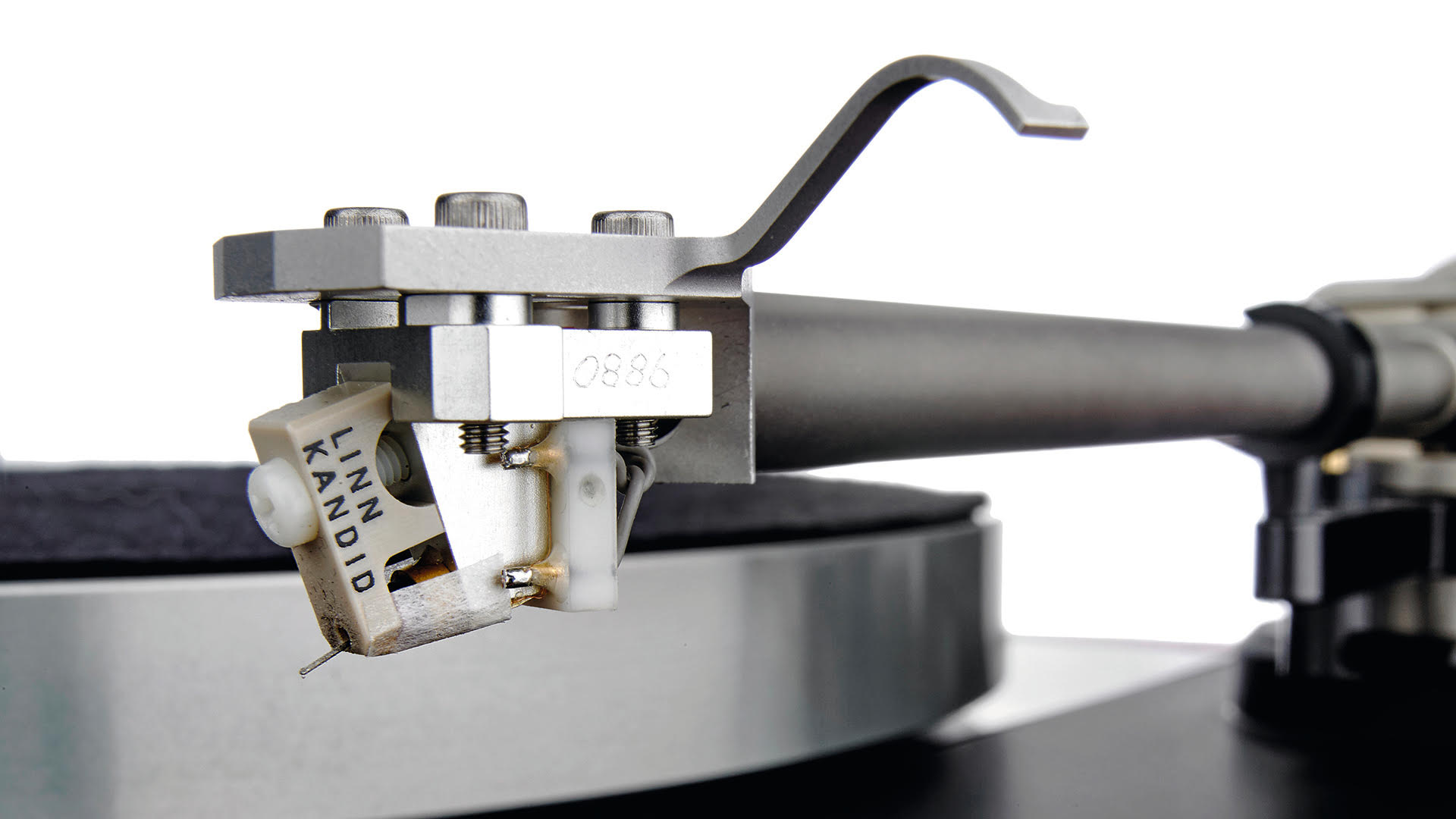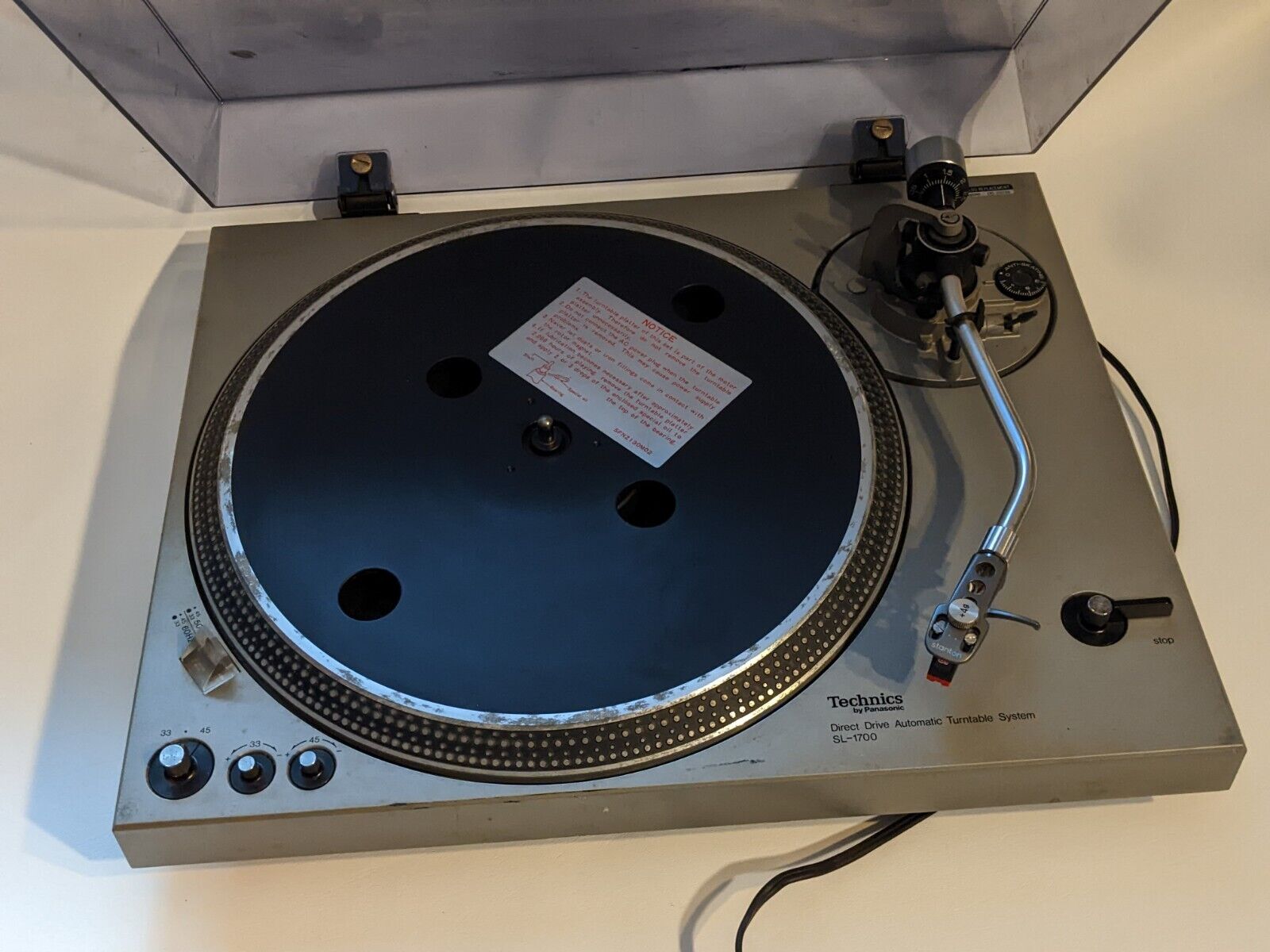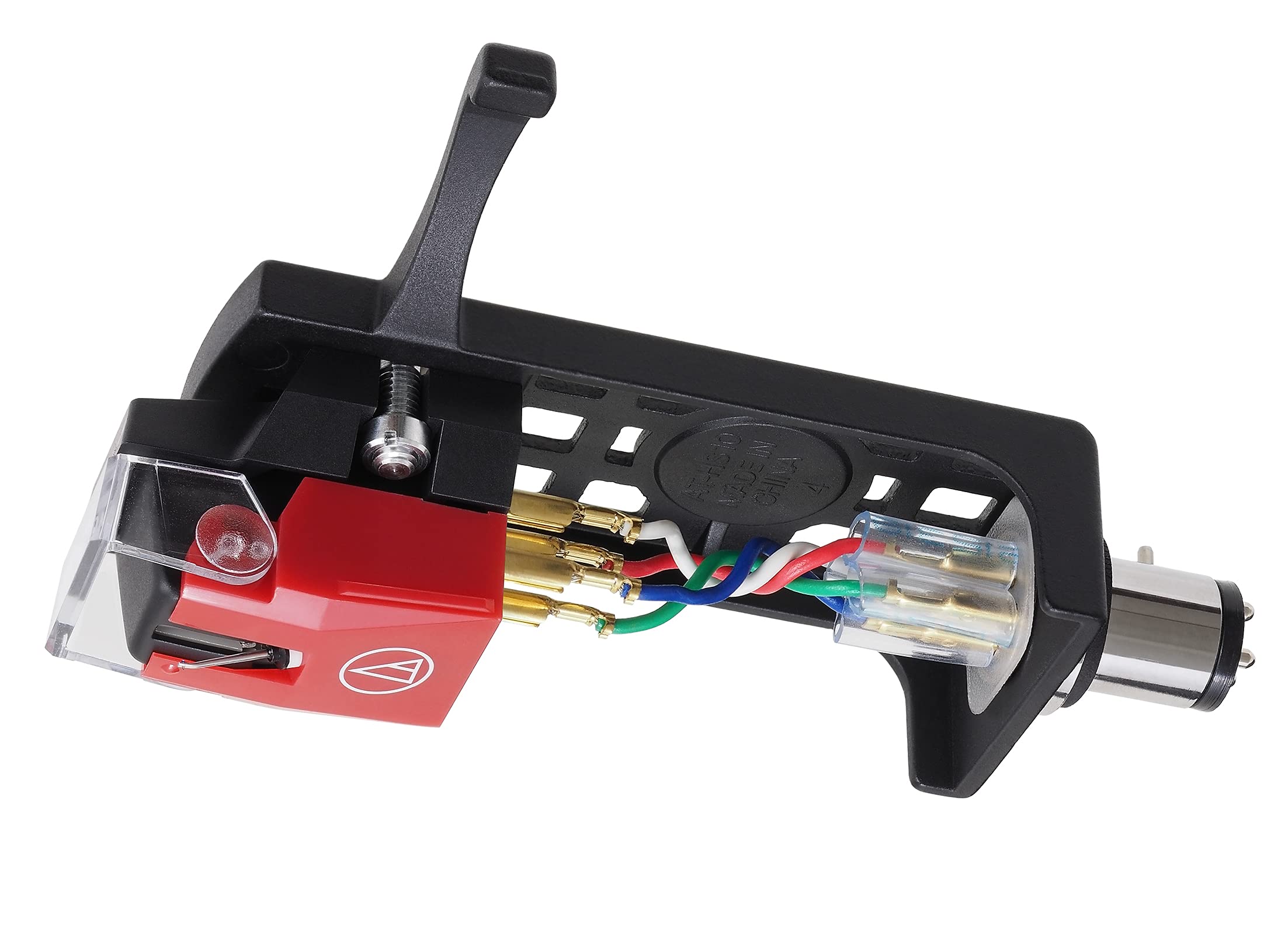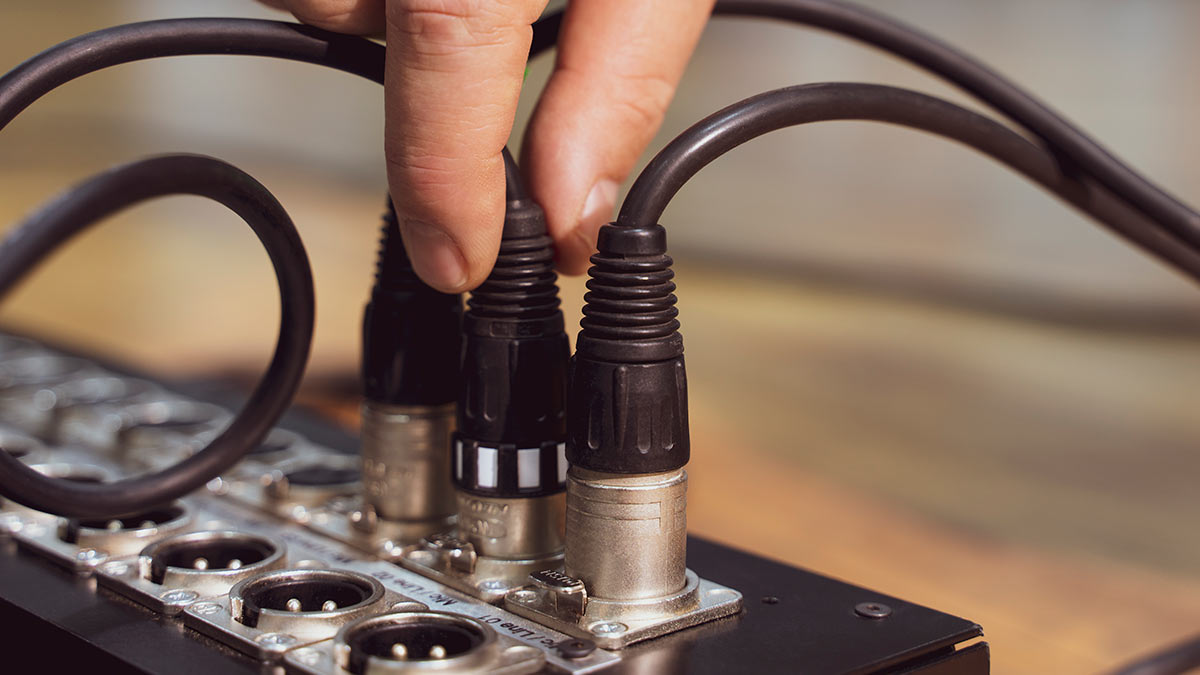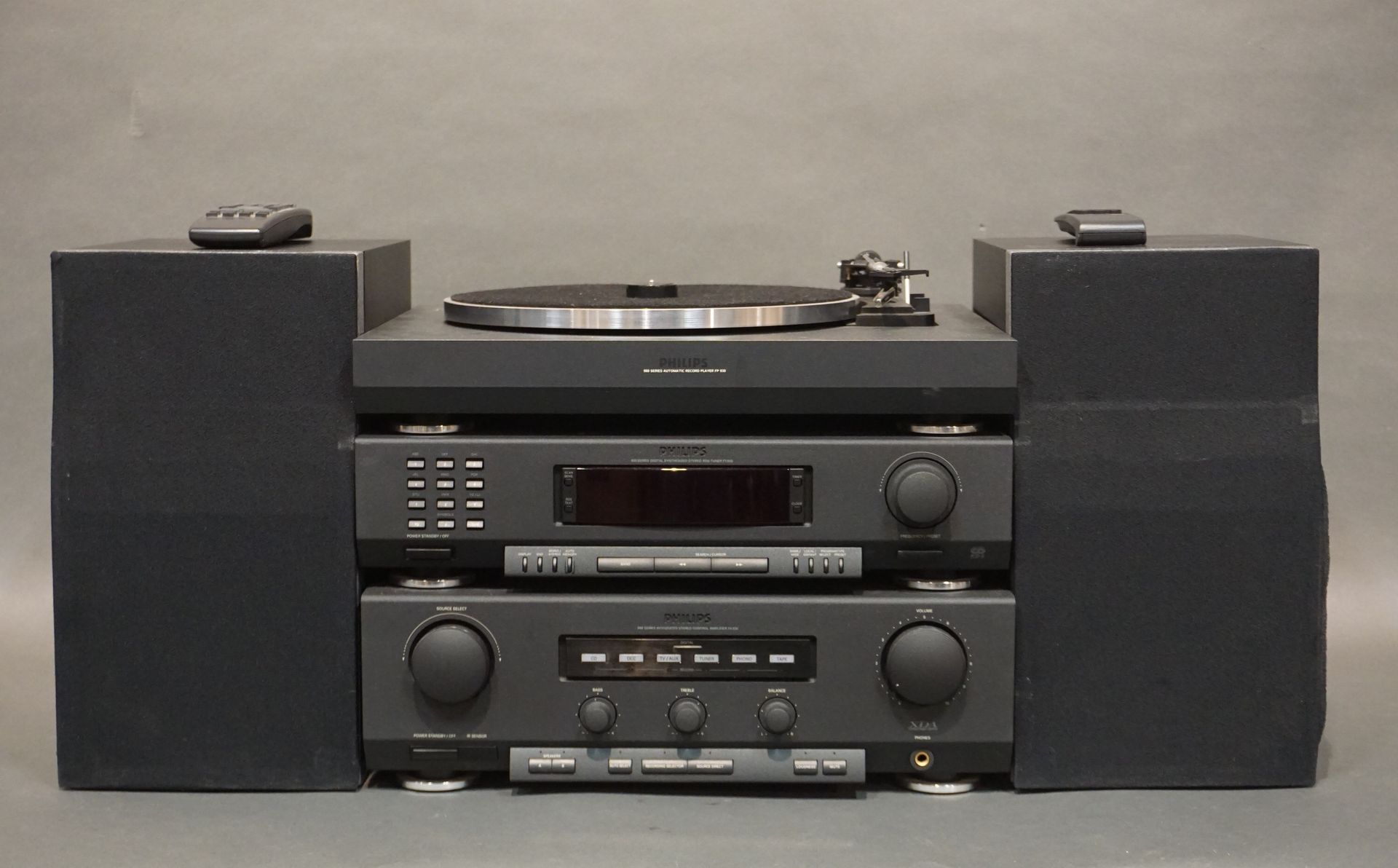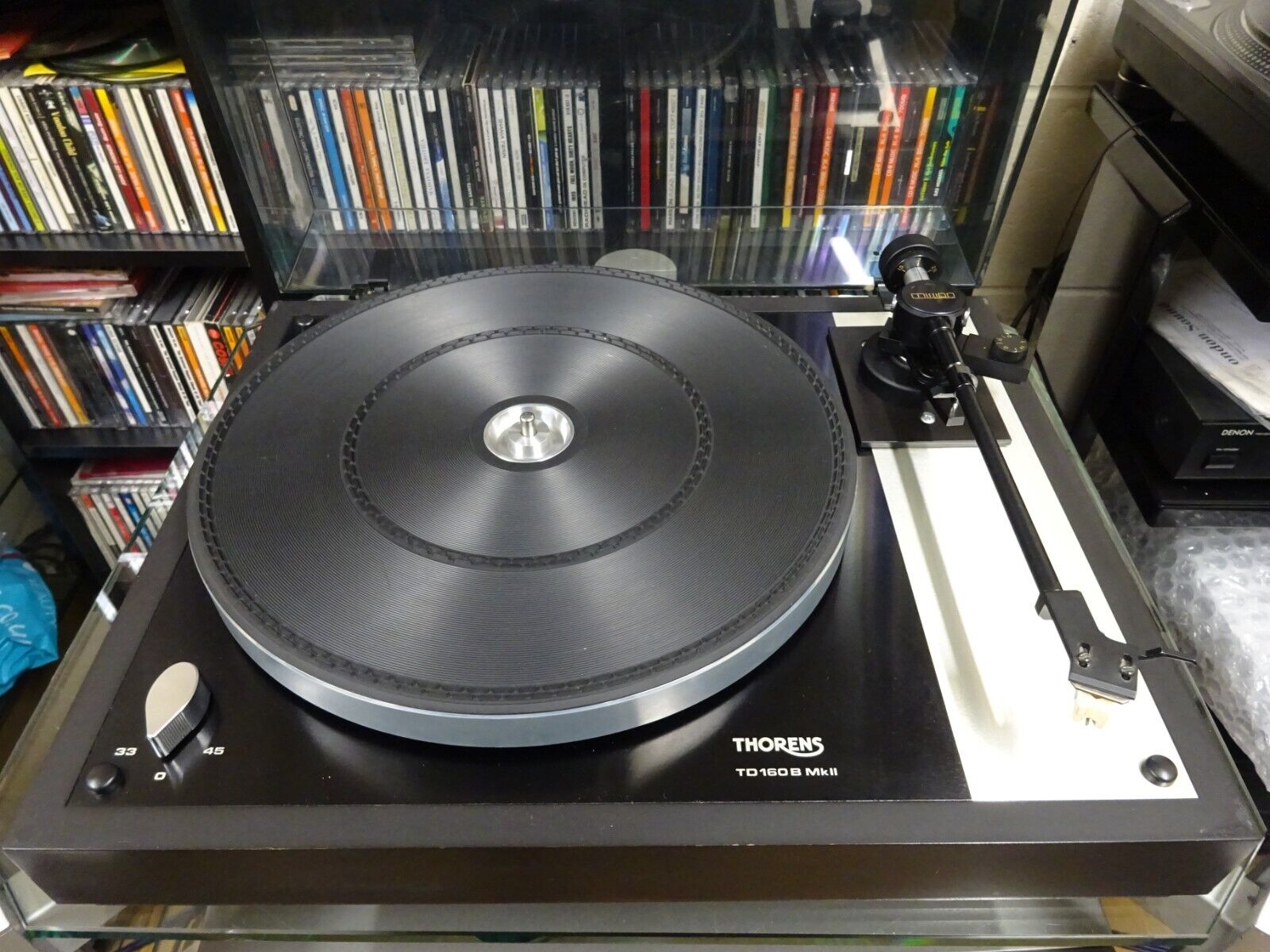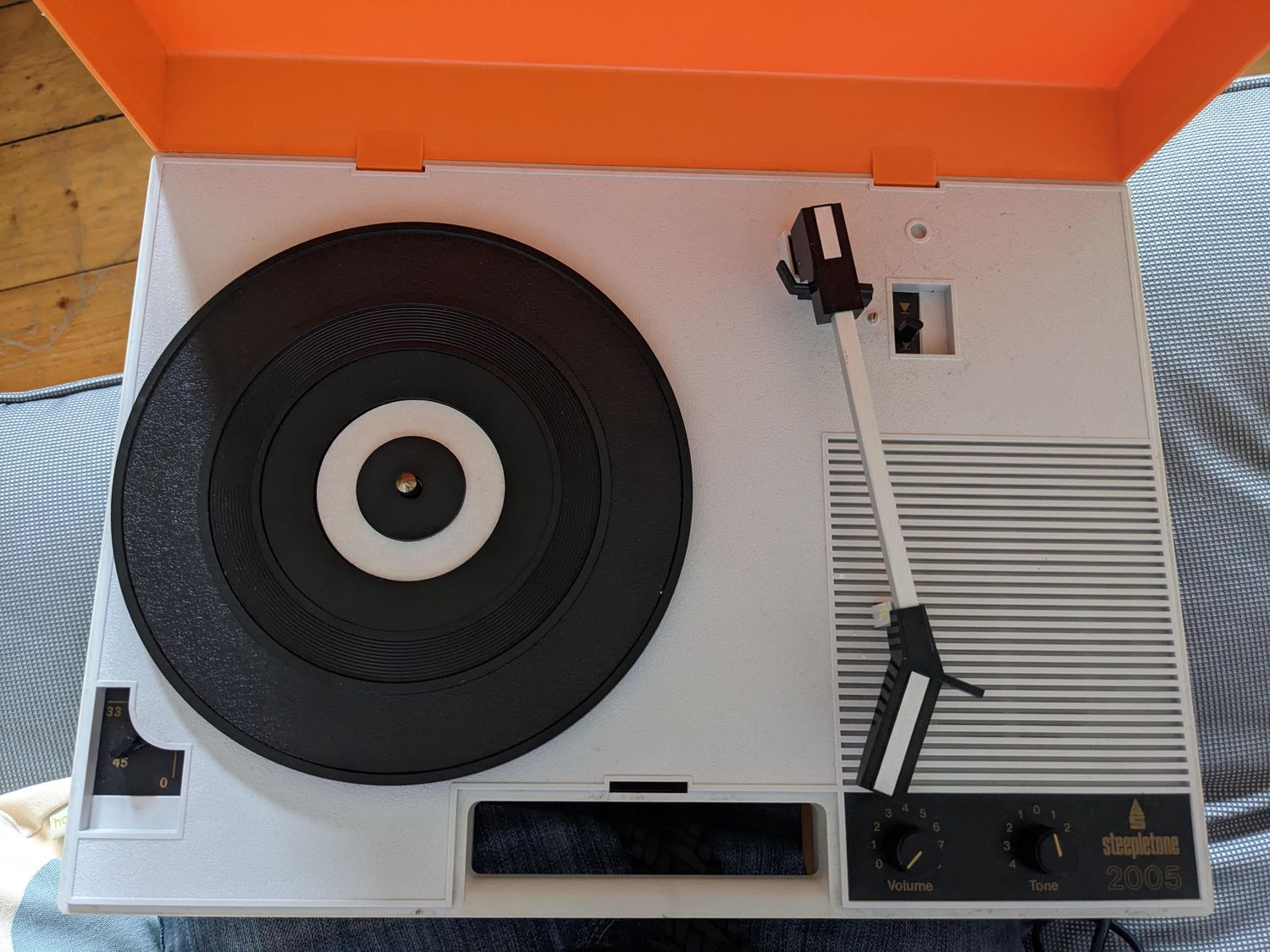Home>Devices & Equipment>Turntable>What Is A Preamp In A Turntable
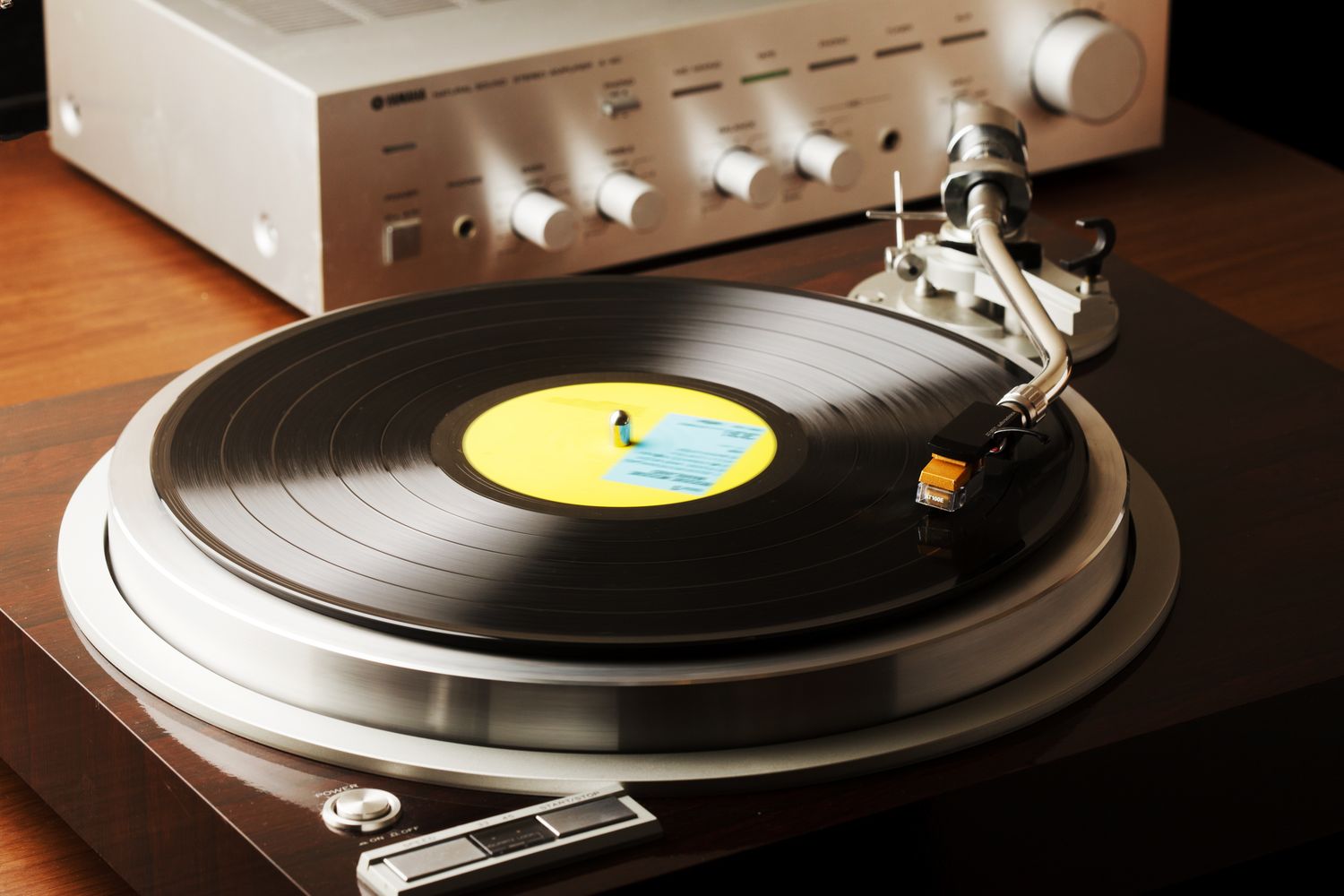

Turntable
What Is A Preamp In A Turntable
Modified: January 22, 2024
Learn about the importance of a preamp in a turntable and how it enhances the sound quality. Discover the key functions and benefits of using a preamp with your turntable.
(Many of the links in this article redirect to a specific reviewed product. Your purchase of these products through affiliate links helps to generate commission for AudioLover.com, at no extra cost. Learn more)
Table of Contents
Introduction
When it comes to the world of vinyl records, turntables have become a popular choice for music enthusiasts looking to experience the warm, analog sound that only vinyl can deliver. But did you know that a crucial component of a turntable setup is a preamp? Whether you’re a seasoned audiophile or just starting to explore the world of vinyl, understanding what a preamp is and its importance can greatly enhance your listening experience.
A preamp, short for preamplifier, is an electronics device that boosts the low-level audio signal from a turntable to a line-level signal suitable for amplification. In simple terms, it’s the intermediary step between your turntable and your amplifier or receiver. While not all turntables require a separate preamp, it plays a vital role in optimizing sound quality and compatibility.
In this article, we will dive into the world of preamps and explore their significance in turntable setups. We will discuss how preamps work, the different types available, and whether or not all turntables need a preamp. Additionally, we will provide guidance on how to connect a preamp to your turntable and troubleshoot common preamp issues.
So, if you’re ready to unlock the full potential of your vinyl collection and take your listening experience to new heights, let’s start by understanding what exactly a preamp is and why it is an essential component of a turntable setup.
What is a Preamp?
A preamp, short for preamplifier, is an electronic device that amplifies a weak audio signal from a turntable and prepares it for further amplification. The signal produced by a turntable cartridge is very low in voltage and requires boosting before it can be sent to a power amplifier or a receiver. This is where a preamp comes in.
The primary function of a preamp is to amplify the signal from the cartridge to a line-level signal that is compatible with other audio equipment. Additionally, it plays a crucial role in equalizing the audio signal to ensure accurate reproduction of the sound. This is achieved through the RIAA equalization curve, which compensates for the inherent frequency response of vinyl records.
Traditionally, preamps were separate units that connected to a turntable via RCA cables. However, in recent years, many turntables have integrated preamps, eliminating the need for an external preamp. These built-in preamps provide a convenient solution for users who want a simple setup or have audio equipment without a dedicated input for a turntable.
Some turntables also offer the option to bypass the built-in preamp, allowing users to connect an external preamp for more flexible customization and control over their sound. This is particularly useful for audiophiles and enthusiasts who desire a higher level of sound quality and prefer to fine-tune their setup.
Preamps can come in various forms, ranging from basic to more sophisticated models. They can be solid-state or tube-based, each with its own unique sonic characteristics. The choice of preamp largely depends on personal preference, budget, and the desired sound signature.
In the next section, we will delve deeper into the importance of a preamp in a turntable setup and why it is crucial for obtaining the best possible audio quality.
Importance of a Preamp in a Turntable
The preamp is a vital component of a turntable setup, and its importance cannot be understated. Here are a few key reasons why a preamp is essential:
- Signal Amplification: As mentioned earlier, the signal produced by a turntable cartridge is very weak. A preamp’s main function is to boost this weak signal to a level that can be properly amplified by a power amplifier or receiver. Without a preamp, the audio signal would be too low and distorted, resulting in poor sound quality.
- RIAA Equalization: Vinyl records have a unique equalization curve called the RIAA curve. This curve compensates for the recording and playback characteristics of vinyl, enhancing the audio quality. A preamp applies the necessary equalization to the audio signal, ensuring that the frequency response matches the RIAA curve. Without this equalization, the sound reproduction would be inaccurate, resulting in imbalanced audio.
- Compatibility: Many modern audio systems, such as amplifiers and receivers, are designed to handle line-level signals. By connecting a turntable with a preamp, you can ensure compatibility with these audio systems. The preamp brings the turntable signal to a level that can be easily understood and processed by the other audio equipment, eliminating compatibility issues.
- Noise Reduction: Preamps also help reduce unwanted noise and interference that may be present in the audio signal. They have built-in mechanisms to minimize hum, hiss, and other distortions, resulting in a cleaner and more enjoyable listening experience.
- Flexibility and Customization: An external preamp provides flexibility and customization options. Users can choose from a wide range of preamp models with different sound characteristics, allowing them to tailor the sound to their preferences. Additionally, external preamps often offer advanced features such as adjustable gain, cartridge loading options, and more control over the sound reproduction.
Overall, a preamp plays a crucial role in optimizing the audio signal from a turntable, ensuring compatibility, accurate sound reproduction, and an improved listening experience. Whether you opt for a turntable with a built-in preamp or choose to use an external one, incorporating a preamp into your setup is highly recommended for achieving the best possible audio quality.
How Does a Preamp Work?
To understand how a preamp works, it’s helpful to have a basic understanding of the components and circuitry involved. At its core, a preamp functions as an amplifier for the weak audio signal produced by the turntable cartridge.
When you place a vinyl record on a turntable and lower the stylus onto the grooves, the cartridge generates a tiny electrical signal as it vibrates in response to the variations in the groove. This electrical signal, also known as the phono signal or phono output, is incredibly weak compared to other audio sources.
The preamp’s main job is to amplify this weak phono signal to a level suitable for further amplification and processing. It accomplishes this by using a combination of amplification stages, filters, and equalization circuitry.
Here is a brief overview of the typical workings of a preamp:
- Amplification: The phono signal from the cartridge enters the preamp, where the initial amplification stage boosts the signal to a higher voltage level. This amplification is necessary to bring the weak signal up to a line-level signal.
- Equalization: After the initial amplification, the preamp applies the RIAA equalization curve. This curve compensates for the frequency response characteristics of vinyl records, boosting the low frequencies and attenuating the high frequencies. This step ensures accurate sound reproduction and maintains consistency across different vinyl recordings.
- Additional Filtering and Processing: The preamp may include additional stages for further filtering and processing of the signal. These stages can remove unwanted noise, such as hum and hiss, as well as provide additional customization options for the user.
- Line-Level Output: Once the signal has been amplified, equalized, and processed, the preamp provides a line-level output signal. This line-level signal is at a standard voltage level that can be easily interpreted and amplified by other audio equipment, such as amplifiers or receivers.
It’s important to note that the specific circuitry and design of preamps can vary, depending on factors such as the type of preamp (solid-state or tube-based) and the desired sound characteristics. However, the basic principles of amplifying the phono signal and applying the RIAA equalization curve remain consistent.
Whether you have a turntable with a built-in preamp or choose to use an external preamp, understanding how it works can help you appreciate the crucial role it plays in enhancing the audio quality of your vinyl records.
Types of Preamps for Turntables
When it comes to preamps for turntables, there are different types to choose from, each with its own characteristics and sonic qualities. Here are the most common types of preamps:
- Solid-State Preamps: Solid-state preamps are the most common and widely used type of preamp. They use solid-state components such as transistors and integrated circuits to amplify and equalize the audio signal. Solid-state preamps are known for their reliability, accuracy, and wide frequency response. They offer a clean and transparent sound reproduction, making them suitable for various music genres and preferences.
- Tube Preamps: Tube preamps, also known as valve preamps, use vacuum tubes in their circuitry. These tubes introduce a warm, vintage character to the audio signal, often described as “tube sound.” Tube preamps are known for their smooth and rich sound quality, with a natural compression that adds depth and warmth to the music. They are popular among audiophiles and those seeking a more vintage sound reproduction.
- Hybrid Preamps: Hybrid preamps combine the best of both worlds by incorporating both solid-state and tube components in their circuitry. This design allows for a balance between accuracy and warmth, providing a versatile and customizable sound experience. Hybrid preamps offer the benefits of solid-state reliability combined with the unique audio characteristics of tubes.
- Passive Preamps: Passive preamps, also known as passive attenuators, don’t actively amplify the signal like active preamps. Instead, they act as a volume control device, attenuating the signal to the desired level. Passive preamps are typically simple in design and don’t introduce any additional coloration or distortion to the audio signal. They are a suitable option for those who prefer a minimalist setup and desire a more transparent sound reproduction.
It’s important to note that the choice of preamp type largely depends on personal preference, desired sound characteristics, and budget. Each type has its own unique sonic signature, and the decision should be based on your individual listening preferences.
When selecting a preamp, consider factors such as the type of turntable you have, the other audio equipment in your setup, and the genre of music you primarily listen to. It’s also worth considering the build quality and additional features offered by different preamp models, such as adjustable gain, cartridge loading options, and connectivity options.
Whether you opt for a solid-state preamp, tube preamp, hybrid preamp, or passive preamp, choosing the right type can greatly enhance your listening experience and bring out the best in your vinyl collection.
Built-In vs. External Preamps
When considering a preamp for your turntable setup, you will come across two options: built-in (or integrated) preamps and external preamps. Each option has its own advantages and considerations, so let’s explore the differences between the two:
Built-In Preamps
Many modern turntables come equipped with a built-in preamp. These preamps are integrated into the turntable, usually located on the back or bottom of the unit. Built-in preamps offer several advantages:
- Simplicity: Built-in preamps eliminate the need for an additional external unit, simplifying your setup. They are convenient for users who want a straightforward and hassle-free connection to their audio system.
- Compatibility: Turntables with built-in preamps often have a line-level output, making them compatible with a wide range of audio equipment, such as amplifiers, receivers, and powered speakers. This versatility allows for easy integration into different setups without the need for additional adapters or equipment.
- Cost-Effectiveness: Built-in preamps can be a cost-effective option as they are included in the turntable itself. This eliminates the need to purchase a separate preamp, saving you money in the process.
However, it’s worth noting that built-in preamps may have some limitations. They are typically designed to be functional and may not offer the same level of customization and sound quality as external preamps. If you have specific preferences or desire more control over your sound, an external preamp might be a better option for you.
External Preamps
External preamps, as the name suggests, are separate units that connect to your turntable. Here are some advantages of using an external preamp:
- Sound Quality: External preamps often provide higher-quality components and circuitry, resulting in more accurate and detailed sound reproduction. They can offer greater clarity, dynamics, and a wider frequency response compared to built-in preamps.
- Customization: External preamps offer more customization options, allowing you to refine and tweak the sound according to your preferences. They often include features like adjustable gain, impedance settings, and cartridge loading options, enabling you to optimize the performance of your specific turntable and cartridge combination.
- Upgradeability: With an external preamp, you have the flexibility to upgrade or change your preamp independently of your turntable. This gives you the freedom to explore different preamp options as your budget and audio preferences evolve.
However, using an external preamp requires additional setup and may involve additional costs. You’ll need to connect the preamp to your turntable and audio system with RCA cables, and potentially invest in quality cables for optimal performance. Additionally, external preamps come in a wide range of price points, so it’s essential to consider your budget and research different models to find one that suits your needs.
Ultimately, the decision between a built-in preamp and an external preamp depends on your priorities and preferences. If simplicity, convenience, and cost-effectiveness are your primary considerations, a built-in preamp may be the right choice. However, if you seek higher sound quality, customization options, and the potential for future upgrades, an external preamp is worth exploring.
Do All Turntables Need a Preamp?
No, not all turntables require a separate preamp. The need for a preamp depends on the specific design of the turntable and the audio equipment you are using. Let’s explore the different scenarios:
Turntables with Built-In Preamps
Many modern turntables come with a built-in preamp. These turntables have a line-level output, which means they can directly connect to audio equipment with line-level inputs, such as amplifiers, receivers, and powered speakers. In this case, a separate preamp is not necessary because the built-in preamp takes care of amplifying and equalizing the audio signal.
Turntables without Built-In Preamps
Some turntables do not have a built-in preamp. These turntables produce a phono-level output signal, which is much lower in voltage compared to line-level signals. In this case, a separate preamp is required to boost the phono-level signal to a line-level signal.
If you have a turntable without a built-in preamp, there are a few options:
- External Preamp: The most common solution is to purchase an external preamp. This separate unit connects between your turntable and your audio equipment, amplifying the phono signal and providing a line-level output. The external preamp can be either solid-state, tube-based, or hybrid, depending on your preferences.
- Phono Stage Input: Some amplifiers or receivers have a dedicated phono stage input. This input includes a built-in preamp designed specifically for turntable use. If your audio equipment has a phono stage input, you can connect your turntable directly to this input without the need for a separate preamp.
- Phono Preamplifier: Another option is to use a standalone phono preamplifier. These are specifically designed preamps that only perform amplification and equalization for turntable signals. If you have a vintage turntable with a magnetic cartridge, a phono preamplifier can provide the necessary signal amplification and equalization.
So, whether or not you need a preamp depends on the specific turntable you have and the audio equipment you’re connecting it to. If your turntable has a built-in preamp or you’re using equipment with a phono stage input, a separate preamp is not required. However, without a built-in preamp or phono stage input, you will need an external preamp or a standalone phono preamplifier.
Before purchasing a preamp, it’s important to check the specifications of your turntable and audio equipment to determine if a preamp is necessary and which type of preamp will be suitable for your setup.
How to Connect a Preamp to a Turntable
Connecting a preamp to a turntable is a relatively straightforward process. Whether you’re using an external preamp or a standalone phono preamplifier, here’s a step-by-step guide to help you get everything connected:
- Identify the Input and Output: Locate the input and output connections on both the preamp and the turntable. Typically, the turntable will have RCA output jacks, while the preamp will have both RCA input and output jacks.
- Power Off and Unplug: Before making any connections, ensure that both the turntable and the preamp are powered off and unplugged. This is for safety and prevents any accidental damage to the equipment during the setup process.
- Connect the Turntable to the Preamp: Take a pair of RCA cables and plug one end into the RCA output jacks on the turntable. The RCA cables typically have different colors for the left and right channels, so match the colors with the corresponding jacks on both the turntable and the preamp.
- Connect the Preamp to the Audio Equipment: Depending on your audio setup, there are a few options for connecting the preamp to your audio equipment. If you’re connecting to an amplifier or receiver, use another pair of RCA cables to connect the RCA output jacks on the preamp to the RCA input jacks on the amplifier or receiver. If your amplifier or receiver has a dedicated phono stage input, connect the preamp to this input using the appropriate cables.
- Power On and Test: Once all the connections are made, double-check that everything is securely plugged in. Power on the turntable, preamp, and any connected audio equipment. Adjust the volume, select the appropriate input on your amplifier or receiver, and play a record to ensure that the setup is working correctly.
It’s important to note that the specific steps and cable connections may vary depending on the preamp and turntable models you’re using. Always refer to the user manuals for your specific equipment for detailed instructions.
In addition, it’s a good practice to use high-quality RCA cables to ensure optimal signal transmission and audio quality. Look for cables with good shielding and solid connections to minimize any interference or loss of signal quality.
By following these steps and ensuring proper cable connections, you can successfully connect a preamp to your turntable, enabling you to enjoy the amplified and equalized audio signal for an enhanced listening experience.
Troubleshooting Common Preamp Issues
While preamps are essential for optimizing the audio signal from your turntable, they can sometimes encounter issues that affect the sound quality or functionality. Here are some common preamp issues that you may encounter and how to troubleshoot them:
No Sound or Weak Sound
If you’re experiencing no sound or weak sound from your turntable, there are a few potential causes and troubleshooting steps to follow:
- Check the Connections: Ensure that all cables are securely connected to the correct input and output jacks on both the turntable and the preamp. Check for any loose connections or damaged cables.
- Verify Power Supply: Make sure that both the turntable and preamp are powered on and receiving power. Check the power cables and power switches to ensure they are properly connected and turned on.
- Adjust Volume Levels: Check the volume levels on your amplifier or receiver and make sure they are adequately adjusted. Also, ensure that the volume control on the preamp is set to an appropriate level.
- Test with Different Equipment: Try connecting the preamp to a different amplifier or receiver to rule out any issues with the audio equipment. If the sound works with another setup, then the issue may lie with your original equipment.
Hum or Noise Issues
If you are experiencing hum or noise issues from your preamp, try the following troubleshooting steps:
- Grounding: Ensure that your turntable is properly grounded. This is typically done by connecting a grounding wire from the turntable to an appropriate grounding point on your audio equipment.
- Separation: Keep your turntable and preamp away from other electrical devices that may cause interference, such as speakers, power supplies, or wireless routers. Electromagnetic interference can introduce unwanted noise into the audio signal.
- Quality of Cables: Check the quality of your RCA cables. Low-quality or damaged cables can introduce noise into the signal. Consider using higher-quality shielded cables to minimize interference.
- Try a Different Outlet: Plug your turntable and preamp into a different power outlet to see if the issue is related to electrical interference in your current location.
Distorted or Unbalanced Sound
If the sound from your turntable is distorted or unbalanced, consider the following troubleshooting steps:
- Cartridge Alignment: Improper cartridge alignment can result in distorted or unbalanced sound reproduction. Check the alignment of your turntable cartridge and ensure it is properly aligned according to the manufacturer’s instructions.
- Tracking Force: Verify that the tracking force of your turntable’s tonearm is set correctly. Too much or too little tracking force can lead to distorted or unbalanced sound. Consult your turntable’s manual for the recommended tracking force and adjust accordingly.
- Cartridge and Stylus Condition: Inspect the condition of your cartridge and stylus. Worn or damaged cartridges or stylus can result in poor sound quality. Replace them if necessary.
- Check Equalization: Ensure that the equalization settings on the preamp are properly selected according to the playback specifications of the vinyl records you are listening to. Incorrect equalization settings can result in imbalanced sound reproduction.
If the troubleshooting steps above do not resolve the issue, consider consulting the user manuals for your specific preamp and turntable or reaching out to the manufacturer’s customer support for further assistance.
By identifying and addressing common preamp issues, you can ensure optimal performance and enjoy high-quality sound reproduction from your turntable setup.
Conclusion
A preamp is a crucial component in a turntable setup, serving to amplify the weak audio signal from the cartridge and prepare it for further amplification. Whether your turntable has a built-in preamp or requires an external one, understanding the importance of a preamp and how it works can greatly enhance your vinyl listening experience.
A preamp’s primary function is to boost the signal from your turntable to a line-level signal, making it compatible with amplifiers, receivers, and other audio equipment. Additionally, a preamp applies the necessary equalization, such as the RIAA curve, to ensure accurate sound reproduction from vinyl records.
There are different types of preamps available, each with its own sonic characteristics. Solid-state preamps provide a clean and transparent sound, while tube preamps offer a warm and vintage sound. Hybrid preamps combine the best of both worlds, and passive preamps offer a minimalist and transparent approach.
Whether a preamp is necessary depends on your specific turntable and audio equipment. Some turntables have built-in preamps, eliminating the need for an external one. However, turntables without built-in preamps require a separate preamp or can be connected to audio equipment with a phono stage input.
Connecting a preamp to your turntable involves identifying the input and output connections, ensuring proper power supply, and adjusting volume levels. Troubleshooting common preamp issues like no sound, hum, or distorted sound can be resolved by checking connections, grounding, and using quality cables.
In conclusion, a preamp is a fundamental component in a turntable setup, ensuring optimal sound quality, compatibility, and customization. By understanding how a preamp works, the types available, and the troubleshooting techniques, you can unlock the full potential of your vinyl collection and enjoy a rich, immersive listening experience.

